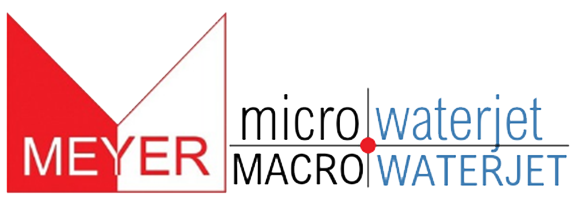Micro Waterjet news article in the August issue of Mechanical Engineering Magazine
Seen in page 23 of the August 2009 edition of Mechanical Engineering Magazine
A COMPANY FORMED IN NORTH CAROLINA IS BRINGING TO THE UNITED STATES A MICROMACHINING SERVICE THAT APPLIES ABRASIVE WATERJET MACHINING WITH WHAT THE COMPANY CLAIMS IS “LASER-LIKE ACCURACY.” The company uses machines developed by a Swiss company, Waterjet AG in Aarwangen.
The new company, Micro Waterjet LLC, is a joint venture of Waterjet AG and Daetwyler Corp., the machine builder in Huntersville, N.C.
According to Micro Waterjet, its abrasive waterjet micromachining capabilities can handle workpieces as large as 600 by 1,000 mm and hold tolerances to 0.01 mm.
Cuts were made in this watch base plate after the rubies went in.
Steve Parette, who is in charge of sales for the new company and for Daetwyler custom fabrication and machining, said Micro Waterjet will be offering machining services. The precision waterjet cutting machinery is not offered for sale, at least for the present time.
According to Parette, the connection between Daet-wyler and Waterjet goes back some time. As a machine builder, Daetwyler was a customer of Waterjet, which provided machining services.
Later, when Waterjet developed its high-precision machines, it hired Daetwyler to build them.
Micro Waterjet is circulating photos of some of its work. One photo shows a watch base plate next to a match head. Along with intricate cutouts the plate contains a number of rubies. According to Parette, the cutouts in the plate had to be made after the rubies where pressed into place. The rubies needed to be pressed into the solid blank. Had the operation taken place after the cuts were made, the workpiece would have been more susceptible to deformation.
According to Micro Waterjet, its machinery is an advance over conventional abrasive waterjet cutting, in which abrasive particles are added to an accelerated water stream that can be used to cut metals. Among the advantages of waterjet cutting is that there are no heat-affected zones or residual stresses on the cut surface.
The company says its process is a refinement of the conventional waterjet process by a factor of 10. The waterjet diameter, or kerf, is reduced by a by factor 5, to 0.2 mm. The company claims a positioning accuracy of +/-3 µm.
